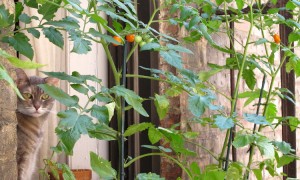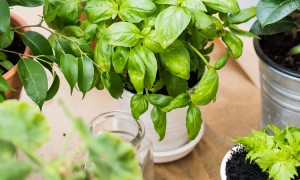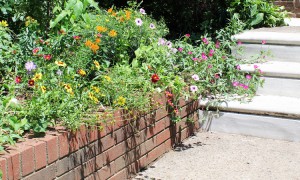If you’re a New Yorker with a green thumb, you may dream of ruby red tomatoes, crisp carrots, and tender lettuce. Well, have you ever considered planting an indoor vegetable garden? It’s possible with the right tips and tools, even in a tiny apartment.
Vegetables to Consider for Your Garden
Herbs are easy to grow, but don’t stop there.
If you want to start small, try growing bean sprouts in a jar. They’ll be ready in a few days. Lettuce and microgreens are also fairly easy to grow indoors.
Sprouts and lettuce are just the beginning, though! You can also cultivate cherry or Roma tomatoes, peppers (look for globe varieties), and beans or peas (select dwarf plants). Radishes grow particularly fast. You can plant carrots, too, although they’ll take more time to mature. If you’re a mushroom lover, grow your own with a kit. Avocado and citrus (such as lemons or mandarin oranges) are another option. Choose special dwarf varieties that are made for indoor cultivation.
You can even grow scallions, celery, and vegetables from leftover food! Check out these 16 foods that’ll regrow from kitchen scraps.

Image Source: Wikimedia Commons
Tips for Starting an Indoor Vegetable Garden
Keep these tips in mind before you get started:
- First, you’ll need a warm, sunny spot for your plants, preferably one that’s south-facing. If your plants don’t receive enough natural light, they’ll be tall and spindly, and you’ll need to purchase a grow light.
- You’ll also need pots or planters, which come in all different sizes: small, large, deep, or shallow. Choose your planters based on the size of the vegetables you’ll grow, and look for pots that have holes for drainage. If there are no holes, add a layer of rocks to the bottom of your planter.
- Purchase soil and plants from a local gardening store, or if you’re feeling particularly industrious, you can make your own organic potting soil and start plants from seeds.
- Peppers and tomato plants depend on bugs for pollination when grown outside, and you’ll need to take their place. For peppers, dab the pollen on a small implement (a cotton swab or paintbrush work well), and then move your tool from flower to flower, spreading the pollen. For tomatoes, flick the stems gently or touch the stem with vibrating toothbrush.
- Indoor gardening is generally low maintenance but keep an eye out for bugs and curious pets, avoid over- and underwatering, and fertilize your vegetables occasionally.
- Most importantly, start small. It’s easy to get carried away, but begin with a few of your favorite vegetables and see how it goes. You can always add more later.

Image Source: Wikimedia Commons/Jonathan Billinger
Gardening Resources
The staff at your neighborhood garden store can provide you with a wealth of information and supplies. Check out Time Out‘s list of the top 10 New York gardening stores to get started. Keep an eye out at your local corner store or bodega for seeds and plants, too.
Of course, you can always order seeds online, where you may find a better selection. One helpful resource is this list of gardening catalogs.
Okay, it’s time to get started. You’ll be impressing your friends with your amazing green thumb in no time!
[cf]skyword_tracking_tag[/cf]







[…] post Cultivate Your Green Thumb with an Indoor Vegetable Garden appeared first on Coldwell Banker Blue […]
[…] Cultivate Your Green Thumb with an Indoor Vegetable Garden […]